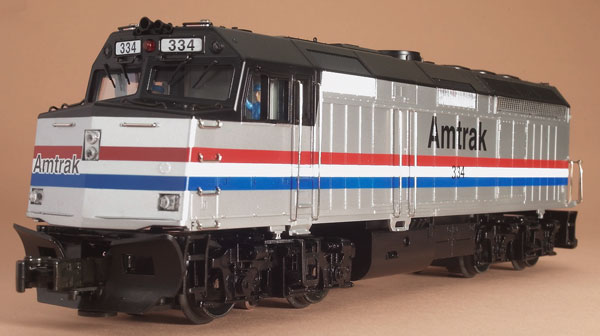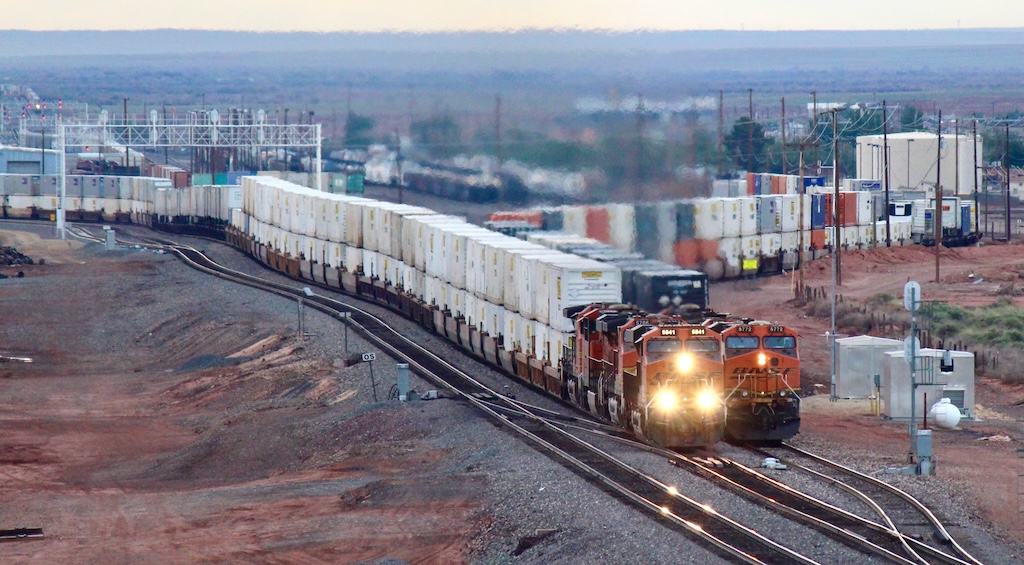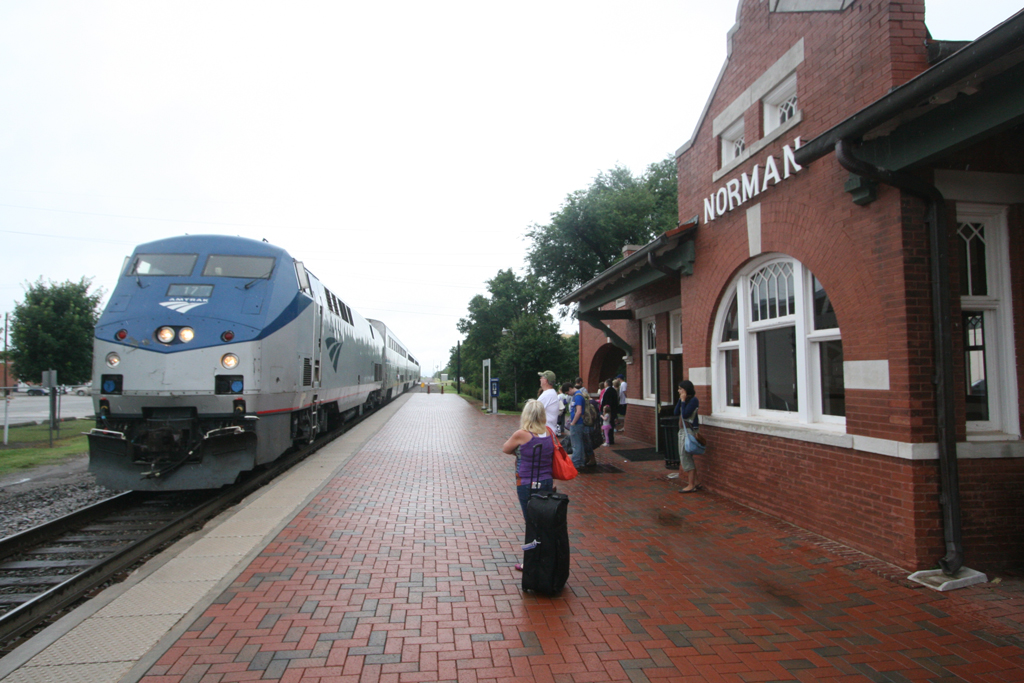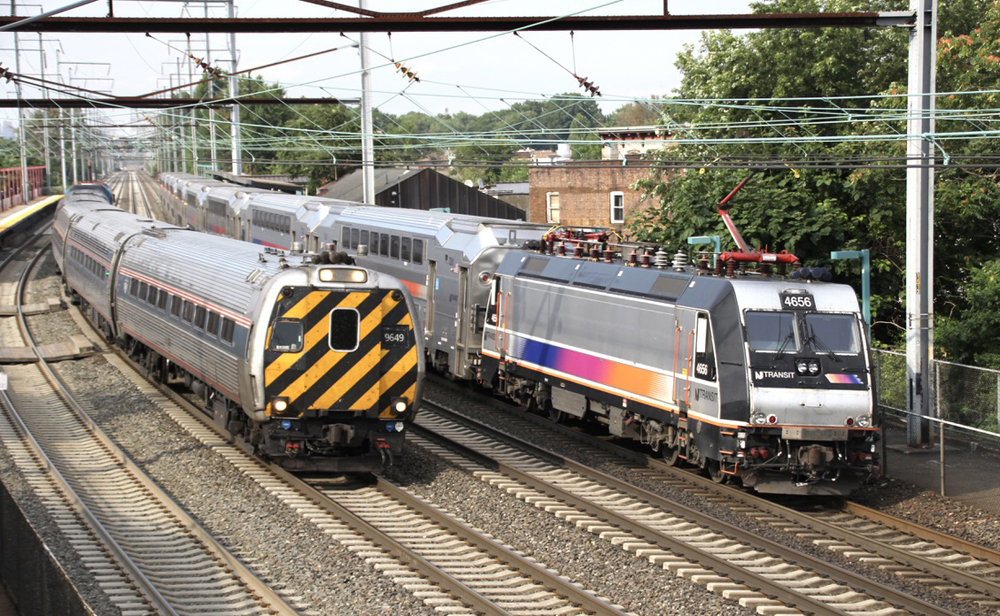The K-Line O gauge Amtrak F40PH has launched fans of the National Passenger Rail Corp. into heaven. Not only are there a host of toy-like Amtrak engines and cars available, there has also been a virtual explosion of scale and semi-scale gear in the colors of their favorite federal program.
If the E8 is a larger-than-life glamour queen of long-distance passenger service, the F40PH and its variations are the plain-Jane cousins designed for short-haul operations.
Electro-Motive sold more than 400 of all versions of the F40 to North American railroads from 1976 to 1988. The 3,000-horsepower diesel is in service with not just Amtrak, but American and Canadian commuter agencies and even freight-hauler CSX.
Learn the history of Amtrak and its trains.
K-Line O gauge Amtrak F40PH
Let’s face it, the F40PH isn’t sexy; it’s a sort of shoebox of a diesel. Still, this engine is rather handsome. The F40PH was Amtrak’s first successful non-hand-me-down diesel (let’s forget about the SDP40F), and, while far from exotic, stylized renderings of its exterior have been used as logos or icons in ads or stories about transportation. It may not have the pleasing face of a Dreyfuss Hudson, but it has its own place in the history of rail travel.

Coupler to coupler, K-Line’s F40PH measures 151/2 inches long or 62 feet in O scale, which is a wee bit longer than the prototype’s 56 feet, 2 inches. The F40PH body has strong details. The nose is short and boxy like the real thing, and it hosts headlights and running lights. The top of the nose has two simulated caps for adding sand to the sanders. There are also 14 add-on grab irons on the nose alone!
The cab features two opening doors, add-on handrails, and two crew figures. The cab roof has two strobe lights and a simulated horn. The shell has a good level of rivet and hinge detail, as does the roof.
More details
The carbody has four sets of radiators with see through grillwork and white fan blades. The air intake grills directly beneath the dynamic braking fan are see through. The air intake fans beneath the exhaust fans have clear plastic so the grill is “filled,” but you can still see the electronic components through it.
Unlike the cab doors, the door on the rear of the carbody doesn’t open. The rear does have add-on grab irons and handrails with a chain.
The red, white, and blue Amtrak striping is superbly applied, as is the Amtrak name on the nose. The add-on grab irons would look better painted. Their silver “paperclip” color really stands out in a negative way when compared to the detailing and decoration of the model.
On the test track
Amtrak should forget the Acela and have K-Line design its high-speed engines. The F40PH will give the true toy train operator high-speed thrills. In conventional mode, we clocked the engine’s low-speed average at 12.3 scale mph. The high-speed average was an impressive 130.5 scale mph. You can tell this engine is related to K-Line’s F-unit (CTT, November 1997), for which we had an individual speed reading of more than 300 scale mph!
Drawbar pull for the 4-pound, 4-ounce engine is 2 pounds, 21/2 ounces, or approximately 103 pieces of modern rolling stock on straight and level track.
When conducting my 18-volt test with a 25-car train in tow, the F40PH rocketed along at 121 scale mph.
The locomotive has a headlight and two tiny strobe lights above the cab. While the strobes do flash, they can be hard to see in a well-lit room.
The RailSounds package is good, but our sample emits a slight speaker vibration sound from time to time. Otherwise, we were pleased with its performance. TrainMaster Command mode operation was fine.
We ran the locomotive in conventional mode with an MRC DualPower O-27 transformer and noted that the engine ran well, but there were some erratic horn blasts. Also, when the bell button was depressed, the engine went into neutral and no bell tone was ever broadcast.
I give the K-Line F40PH two thumbs up. It is a nice-looking, well-balanced O gauge locomotive that delivers great performance.
This CTT review was originally published in 2006.













